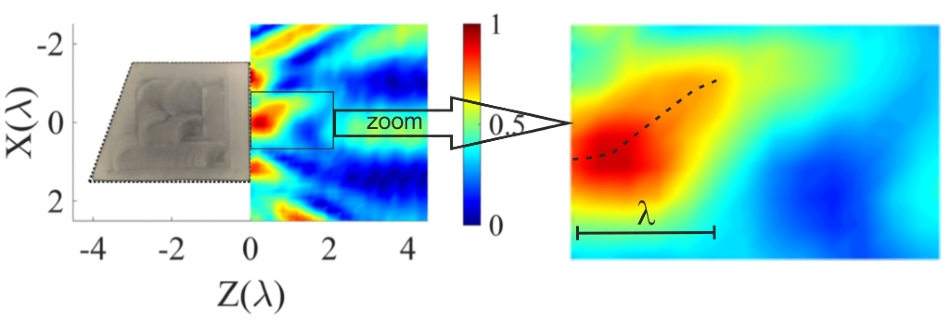Jan 28 2020
The presence of a new kind of curved acoustic wave beams, called acoustical hooks, has been modeled and experimentally verified by researchers from Tomsk Polytechnic University and Tomsk State University, in collaboration with their colleagues from Spain.
 Acoustical hook visualization. Image Credit: Tomsk Polytechnic University.
Acoustical hook visualization. Image Credit: Tomsk Polytechnic University.
These acoustical hooks form a curved acoustical stream that can bend at a distance less than a wavelength. Hence, they could be a useful tool to offer ultrasonic manipulations with particles at an extra-small distance, that is, at a sub-wave level. These manipulations are essential for biomedical research, such as in the preparation of new materials. The research was reported in Results in Physics.
Earlier, researchers were familiar with only one kind of curved optical rays called Airy beams, and their derivatives. These rays were achieved in 2007. Thanks to their physical properties, it is possible to use the beams to manipulate the small particles, which can be used in cell biology and microfluidics. Modern equipment is needed to obtain these beams. Hence, scientists across the globe are seeking new kinds of easily achievable curved beams.
“Principles of obtaining new curved beams is an interesting and promising research field for both fundamental and applied areas,” stated Igor Minin, the head of the project and professor of the TPU Division for Electronic Engineering.
In 2018, our team theoretically predicted the existence of a new type of curved hook-like self-accelerating light beam. We named it a photonic hook, which is a curved electromagnetic wave. After that, we wondered if such curved beams could be obtained from an acoustic wave? Our new study positively responded to this challenge. We can obtain this beam incomparably easier than Airy beams.
Igor Minin, Professor, Division for Electronic Engineering, Tomsk Polytechnic University
The scientists produced an acoustical hook using a microparticle made of an asymmetrically shaped Rexolite dielectric material. During the analysis, this particle was placed in water and irradiated using ultrasound. A sound wave bends in the shape of a hook after passing through and leaving from a particle of this shape. The analyses were performed at the Polytechnic University of Valencia (Spain).
Today, the main application of acoustical hooks is biomedicine, synthesis of new materials, manipulation of nanoparticles using ultrasound with high sub-wave accuracy. They can be used where other types of curved acoustic beams such as Airy cannot. In the future, we plan to carry out experiments and try to use acoustic hooks directly for particle manipulations.
Igor Minin, Professor, Division for Electronic Engineering, Tomsk Polytechnic University
The study was supported in part by the Russian Foundation for Basic Research and Tomsk Polytechnic University Competitiveness Enhancement Program.